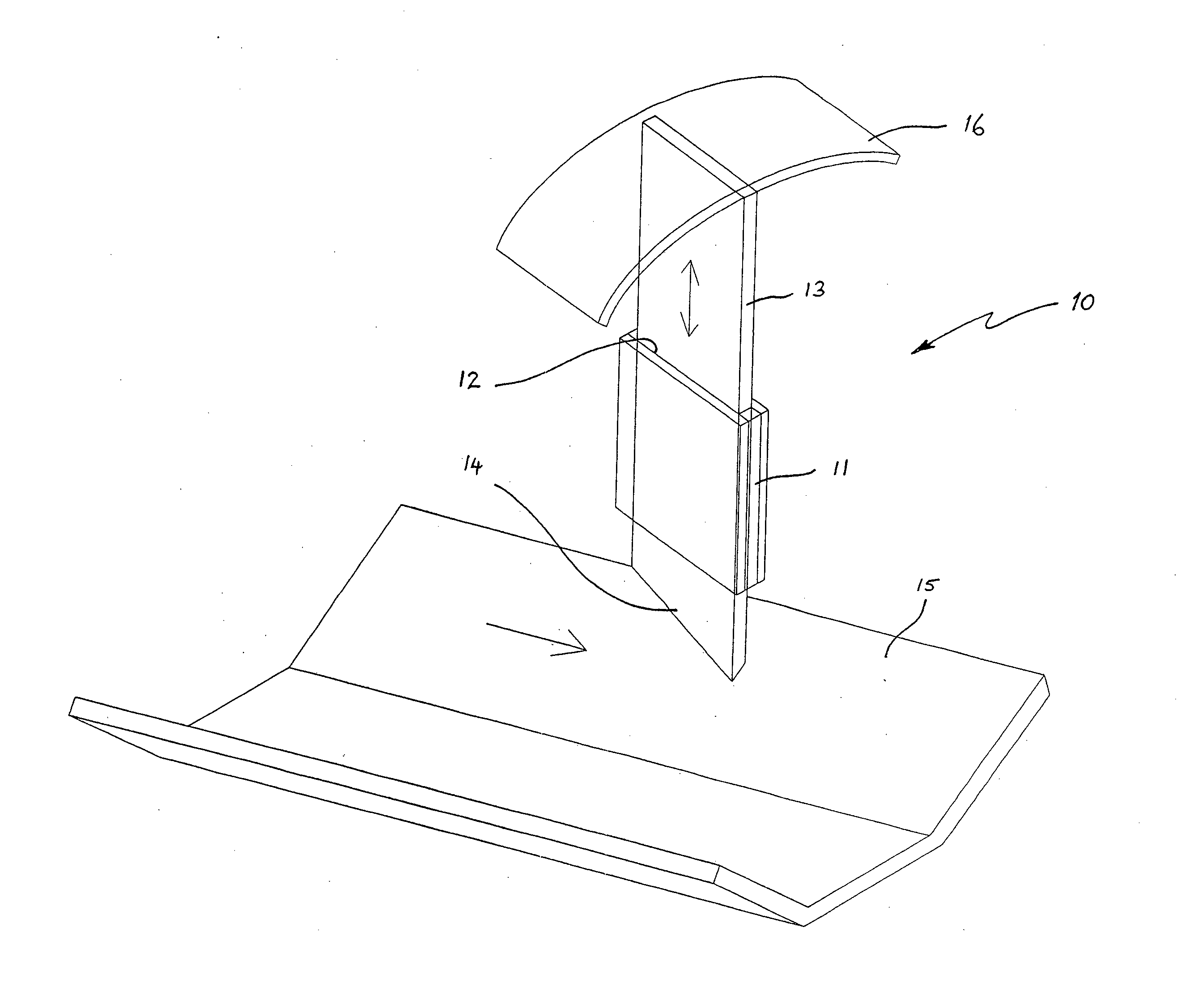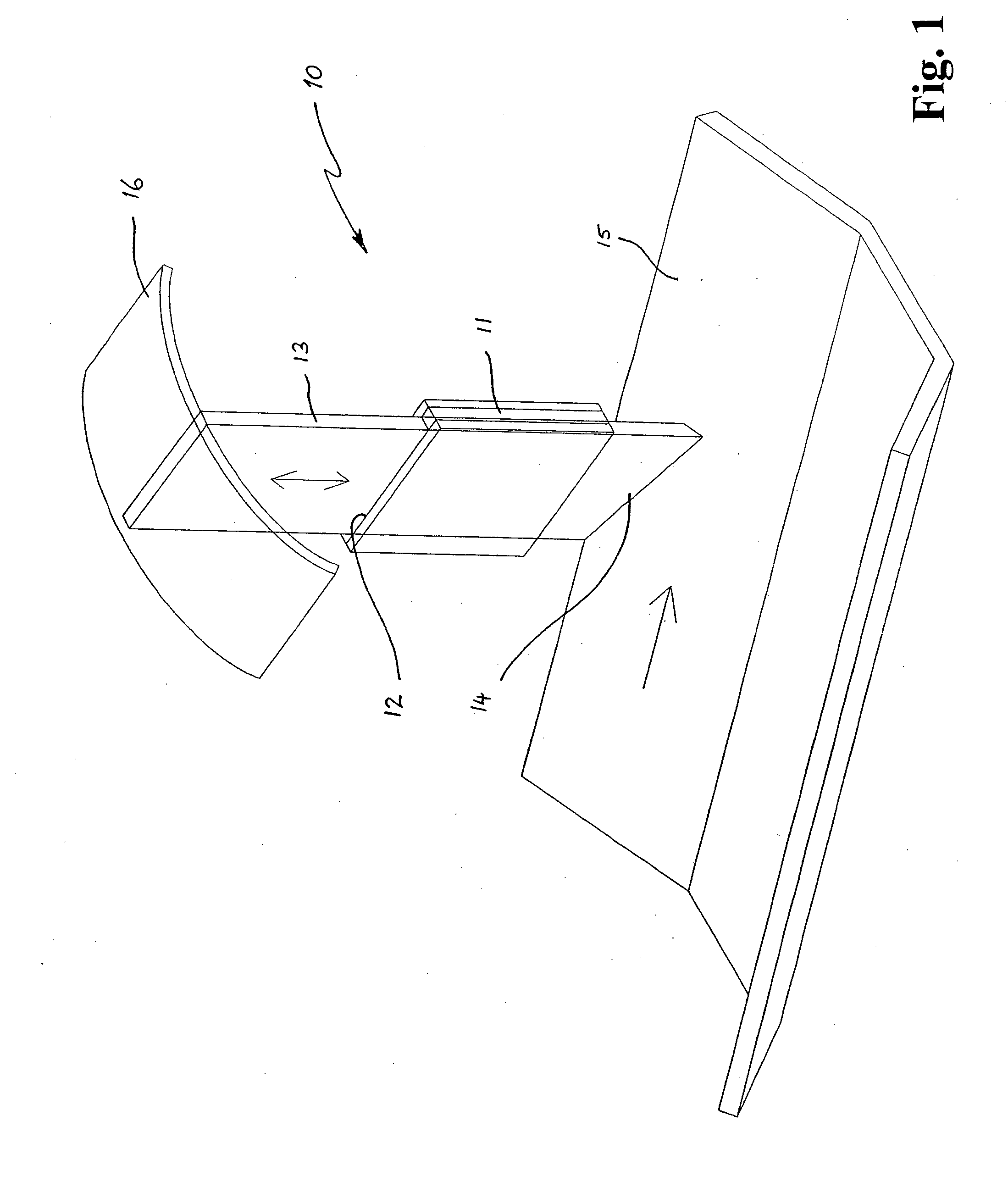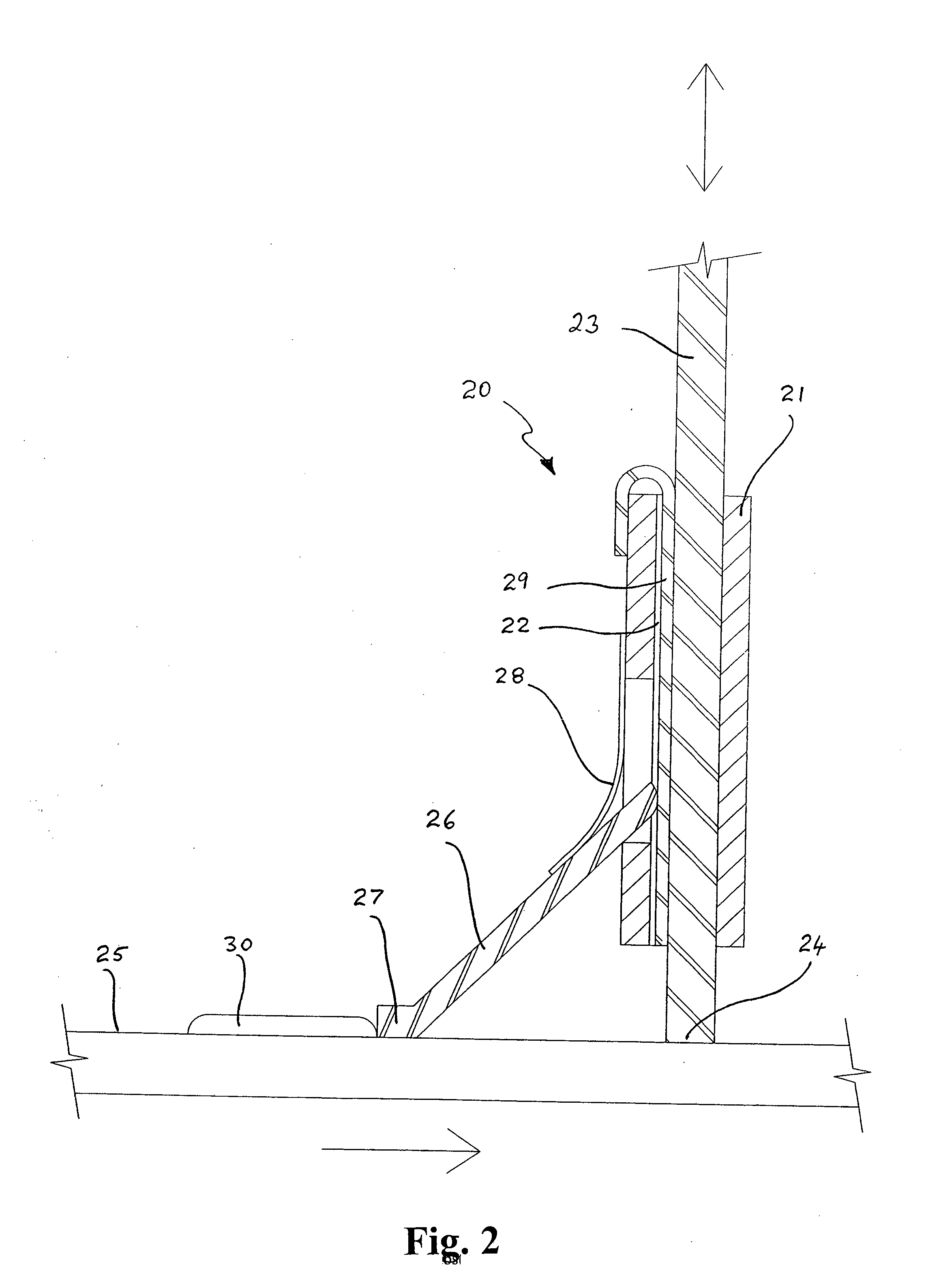Belt plough
a belt-type, belt-type technology, applied in the direction of conveyor parts, conveyors, transportation and packaging, etc., can solve the problems of spillage/cleanup problems downstream, serious damage, and significant amount of material outside the alignment of the belt-type skirt, so as to improve the cleaning performance of the system, improve the contact, and dampen the vibration
- Summary
- Abstract
- Description
- Claims
- Application Information
AI Technical Summary
Benefits of technology
Problems solved by technology
Method used
Image
Examples
first embodiment
[0029]FIG. 1. illustrates a belt plough assembly 10 according to the invention. The belt plough assembly 10 comprises a housing 11 having a slot therein which extends substantially vertically. An upright plough blade 13 is located within the slot 12, and is able to slide up and down in the slot.
[0030]Although the slot 12 is shown vertical in FIG. 1, it will be appreciated that the slot may be orientated at an angle to the vertical, and the blade 13 will slide in an oblique direction. Generally however, the slot 12 and blade 13 will be mounted in a substantially upright orientation.
[0031]The bottom edge 14 of the blade 13 rests on the surface of a conveyor belt 15, primarily or substantially under the dead weight of the blade 13. No significant additional downward bias or force is applied to the blade. The blade is held in the housing such that the broad face of the blade 13 is angled obliquely to the direction of travel of the conveyor belt 15, so as to direct or deflect material on...
second embodiment
[0038]FIG. 2 illustrates a modified belt plough assembly according to the invention. The plough assembly 20 of FIG. 2 is similar to that of FIG. 1, in that it comprises a housing 21 having a slot 22 in which a blade 23 is slideably mounted in an upright orientation. The blade 23 has a lower edge portion 24 which rests upon the moving belt 25, and is free to move up and down to follow undulations in the belt.
[0039]The belt plough assembly 20 also has a link arm 26 extending obliquely downwardly from the housing 21 and in the counter direction to the direction of travel of the belt 25, i.e. on the upstream side of the blade 23. The link arm 26 is provided with a flat-bottomed foot portion 27 which rests upon the belt 25. The link arm 26 is connected to the housing 22 by a flexible strap 28 or other suitable hinge, so that the foot 27 of the link arm can ‘float’ on the surface of the belt 25.
[0040]A sheet of high friction material 29 is interposed between the upstream end of the blade ...
third embodiment
[0043]FIG. 3 illustrates the plough assembly in which a blade 33 is pivotally connected to a support 31 by a pivot arm 32. The support 31 may be part of the conveyor supporting framework. The pivot arm 32 is of relatively lightweight construction. The bottom edge 34 of the blade 33 rests on the belt 35. The blade 33 is able to pivot freely about its pivot connection to the support 31 so that it rests substantially under its own weight on the belt, and can maintain contact with the belt and follow any undulations in the moving belt. A damping mechanism as described above may be added to blade 33 or pivot arm 32.
[0044]As with the previous embodiments, the belt plough of FIG. 3 can use a blade of “ordinary” plastic / rubber which can operate primarily under its own weight without excessive wear rates or melting, and still provide a satisfactory cleaning performance.
PUM
 Login to View More
Login to View More Abstract
Description
Claims
Application Information
 Login to View More
Login to View More - R&D
- Intellectual Property
- Life Sciences
- Materials
- Tech Scout
- Unparalleled Data Quality
- Higher Quality Content
- 60% Fewer Hallucinations
Browse by: Latest US Patents, China's latest patents, Technical Efficacy Thesaurus, Application Domain, Technology Topic, Popular Technical Reports.
© 2025 PatSnap. All rights reserved.Legal|Privacy policy|Modern Slavery Act Transparency Statement|Sitemap|About US| Contact US: help@patsnap.com



